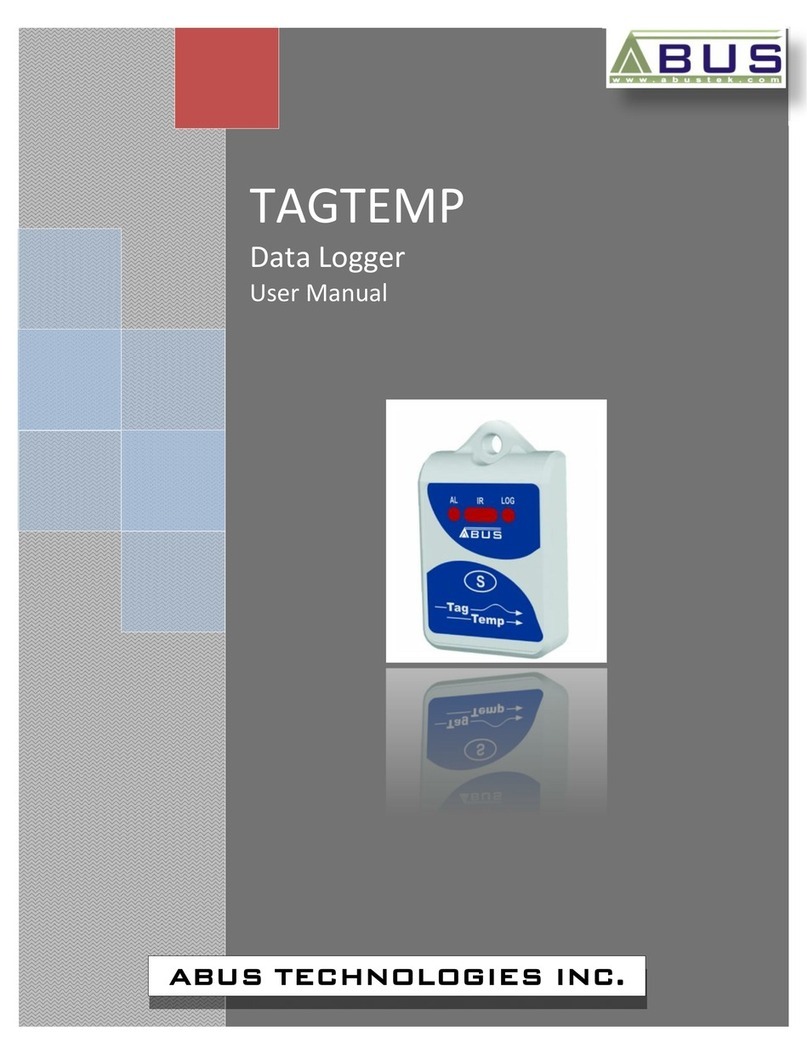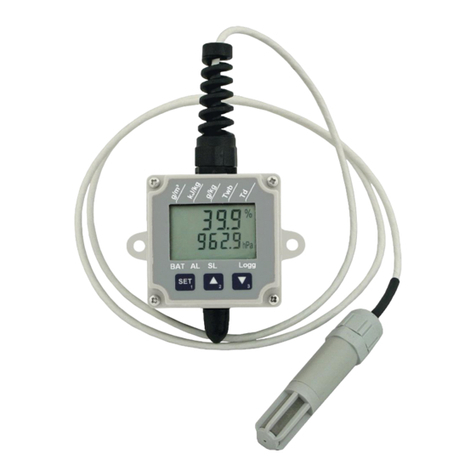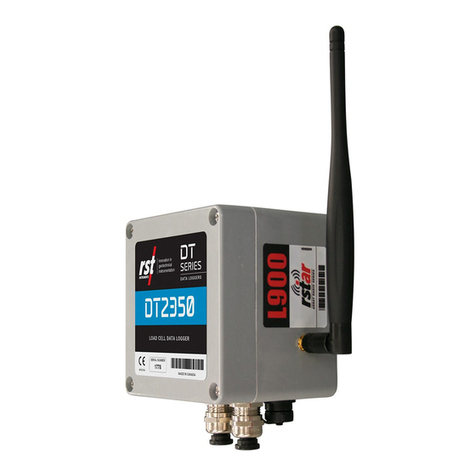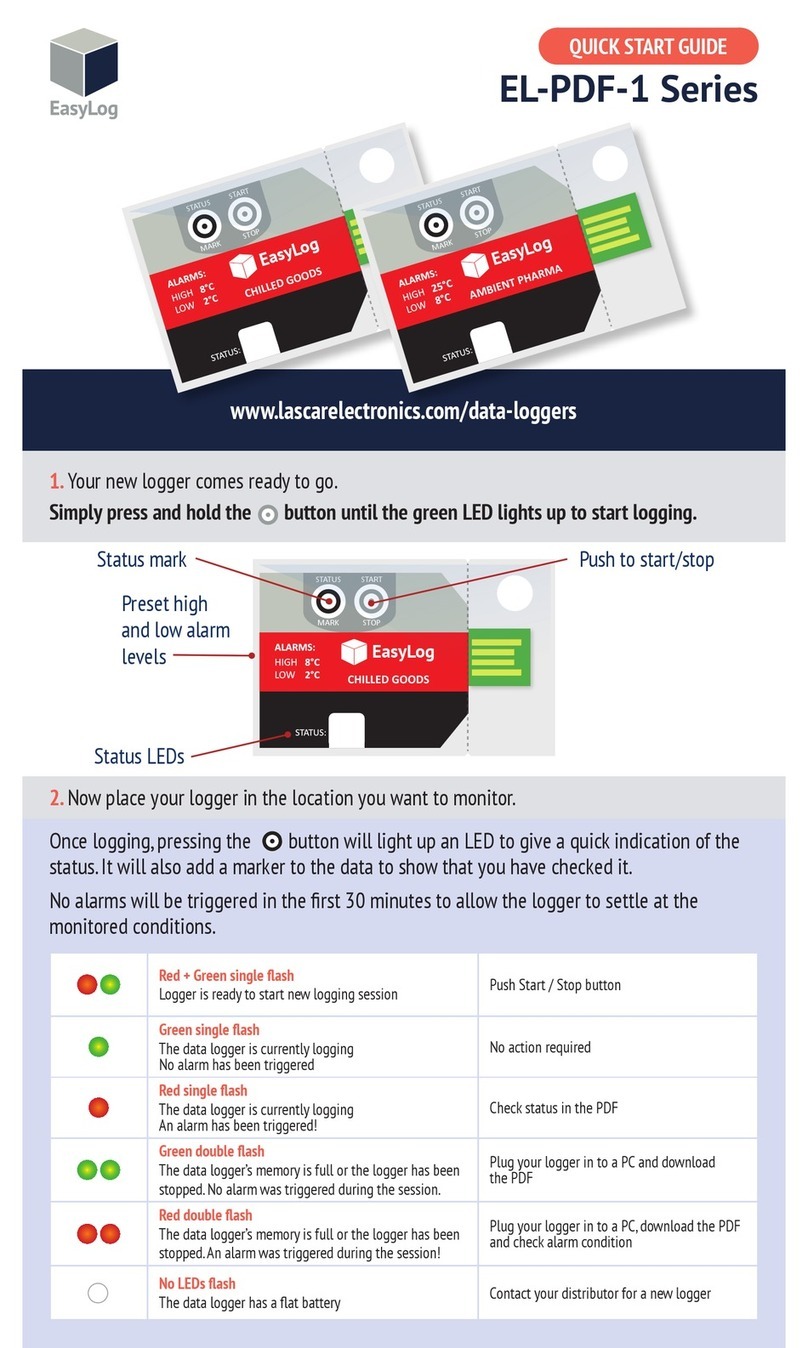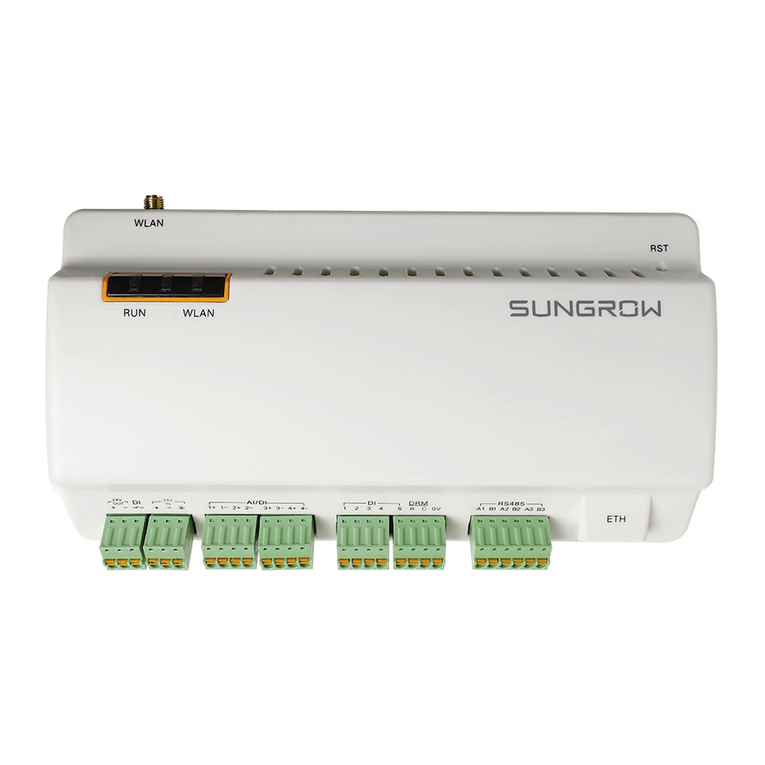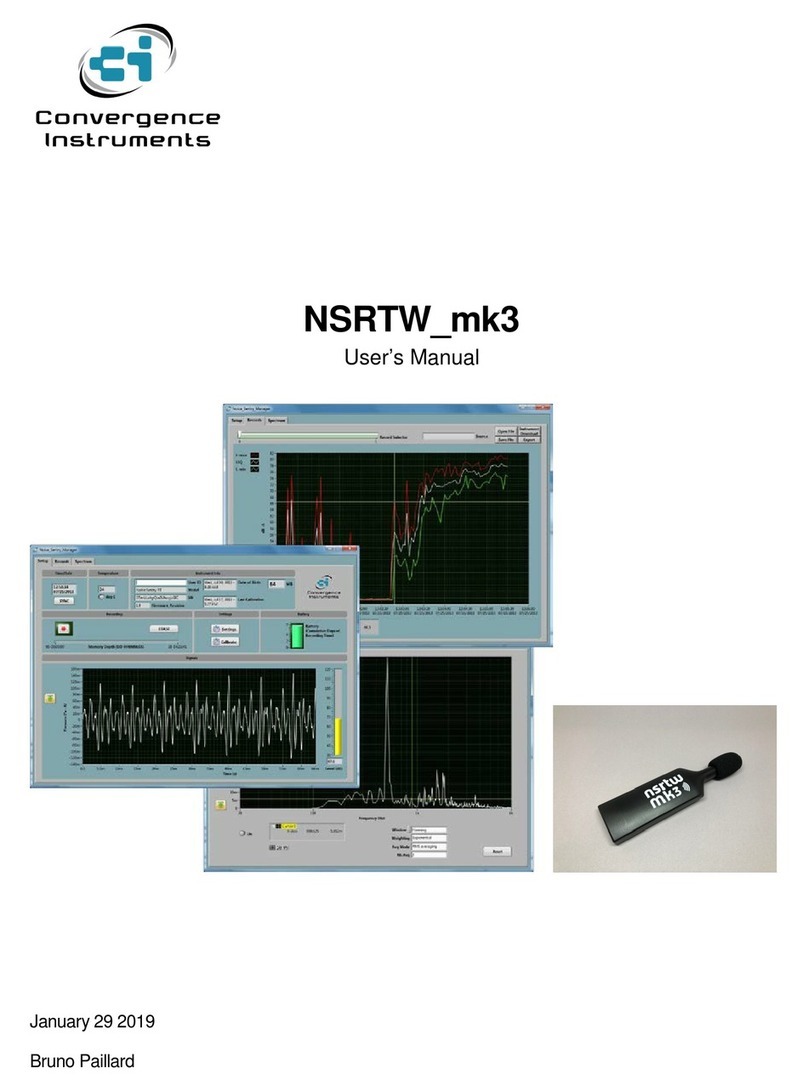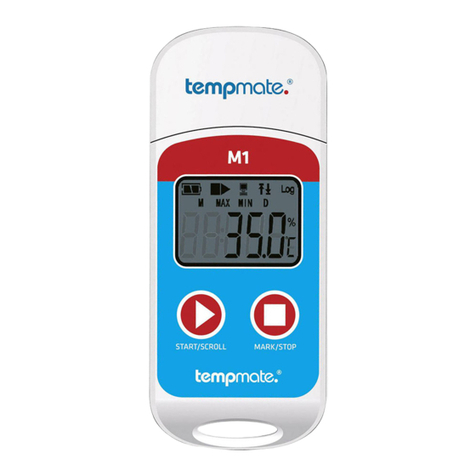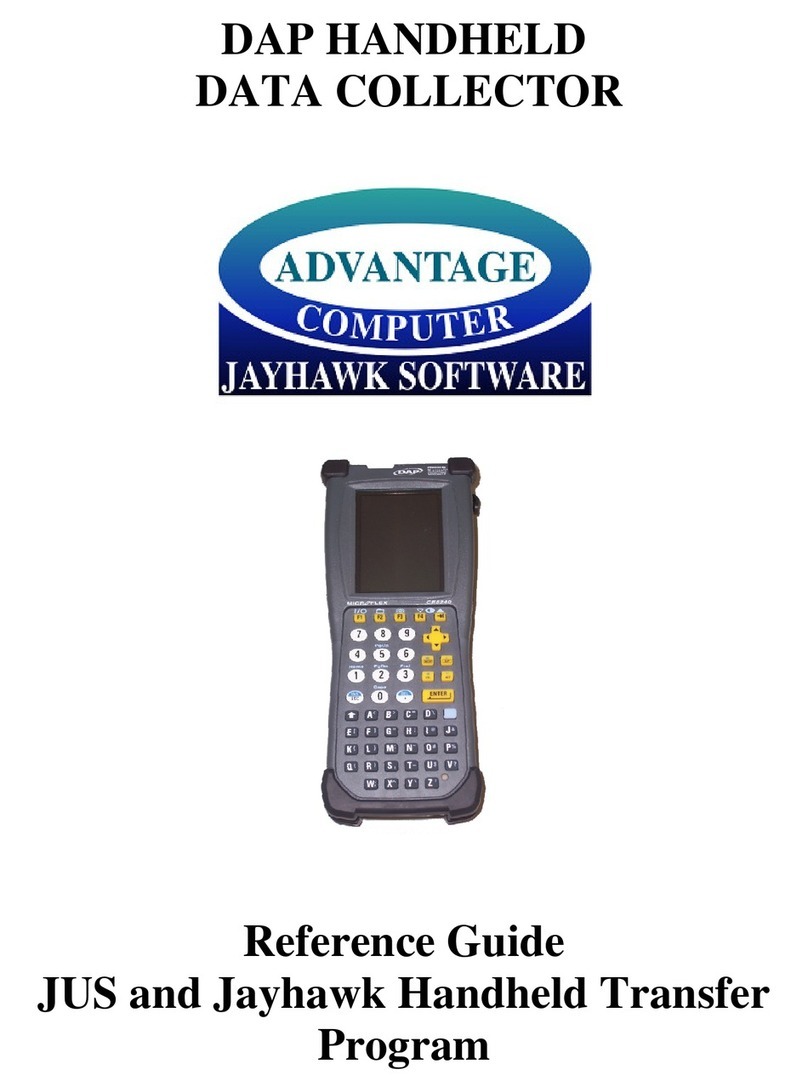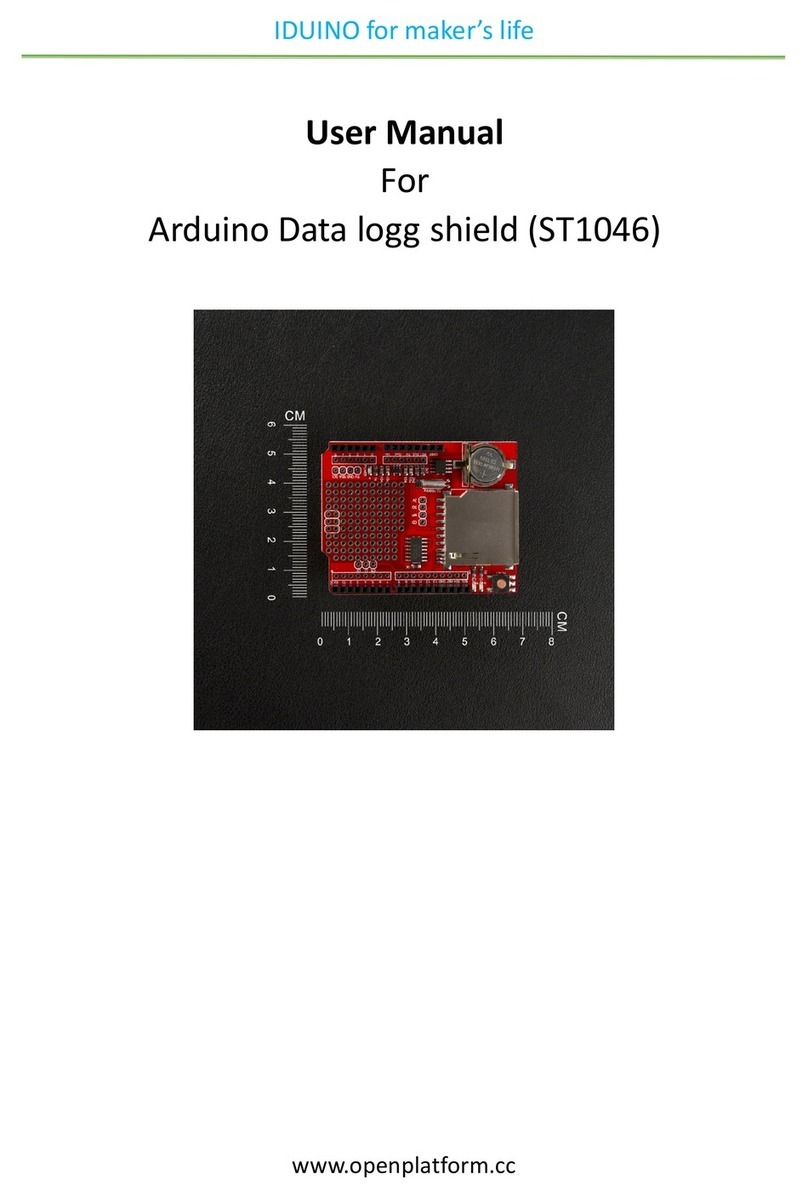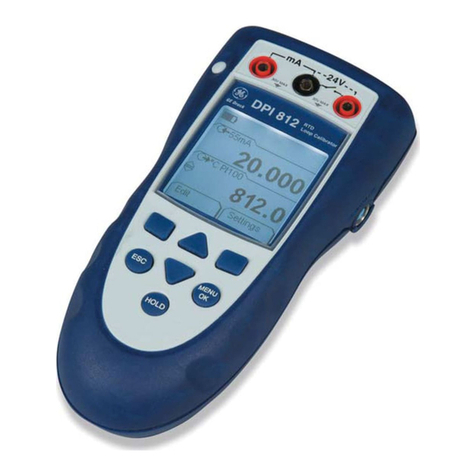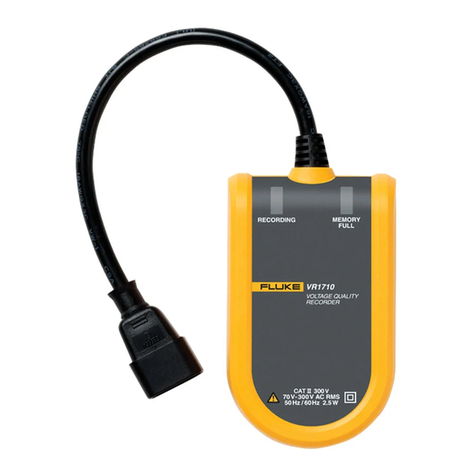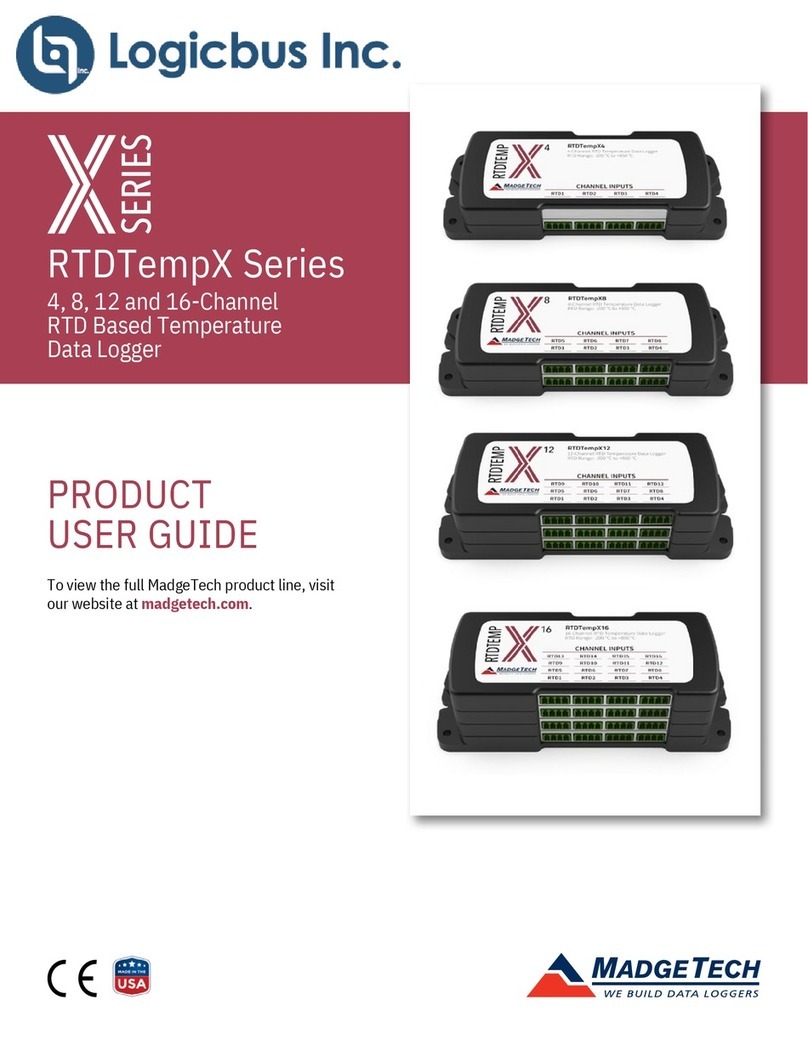greenTEG gSKIN U-Value Kit User manual

Instruction Manual
for
gSKIN®U-Value Kit
Status: February 2020


gSKIN®U-Value KIT: Instruction Manual
1 / 12
greenTEG AG
Hofwisenstr. 50A
8153 Rümlang, Switzerland
T: +41 44 515 09 15
Content
1. The gSKIN U-Value KIT –delivery overview .......................................................................................................................................1
2. General overview of the gSKIN® U-value software........................................................................................................................2
3. Ready to measure in five minutes by following these steps .......................................................................................................3
4. Six-steps summary.........................................................................................................................................................................................8
Appendix A: U-Value software introduction................................................................................................................................................9
Appendix B: Data Logger Characteristics................................................................................................................................................... 12
Appendix C: Special Instructions for window U-Value measurement............................................................................................ 12
1. The gSKIN U-Value KIT –delivery overview
By post:
1 gSKIN®Heat Flux Sensor
1 gSKIN®DLOG Data Logger with 2 temperature sensors
1 USB cable (PC to data logger)
1 gOMS Mount-1235 (adhesive tape roll)
1 Calibration sheet
1 Instruction manual
By email:
Link and password for software download
Figure 1: U-Value KIT in transportation box

2 / 12
gSKIN®U-Value KIT: Instruction Manual
greenTEG AG
Hofwisenstr. 50A
8153 Rümlang, Switzerland
T: +41 44 515 09 15
2. General overview of the gSKIN® U-value software
The gSKIN® U-value software is built upon a home screen with 5 functional buttons and 2 top-menu buttons
(see Figure 2).
5 functional buttons in the centre of the home screen:
1. Real time measurement: This button allows the user to review all data points measured by the sensors
of the U-value KIT (temperature, heat flux, calculated U-value) in real-time. With this menu-screen, one
cannot start a new U-value measuring process –it can only be used once for reviewing all sensors that
are working and to show their real-time values.
2. Start logging: From here, you can start your measuring process. Before starting, please select the
frequency at which you would like to log your data points and when you want to start the measurement
process (logger stores up to two million data points; for details, please refer to Appendix B).
3. Read record: Via this button, you can select measurement files that have been saved on your logger for
further analysis (e.g. export raw data, print PDF reports).
4. Analyse record: Here, you can search for other logger protocol files (*.msr) which have been saved on
your computer.
5. Exit: This button will close the program.
Two top-menu buttons:
1. Menu-button “File“: This button can be used to end the program (“Exit”), to export data while you
review data points in the “Read record”tab or change the language.
2. Menu-button “Logger”: This button can be used to stop your measurement process and to delete all
measurement files from the data logger (“Delete all stored data!”).
Figure 2: Home screen view with data logger connected to your laptop.

gSKIN®U-Value KIT: Instruction Manual
3 / 12
greenTEG AG
Hofwisenstr. 50A
8153 Rümlang, Switzerland
T: +41 44 515 09 15
3. Ready to measure in five minutes by following these steps
1. Connect the data logger to your computer via the USB cable provided.
2. Allow all drivers to be installed.
3. The necessary read-out software can be downloaded from https://www.greenteg.com/Download-
Software/ (use the password provided to you by greenTEG). Follow the instructions to install the software
on your computer. You need to have admin rights to follow all necessary steps (right click on option
"Execute as Administrator").
Currently the software is compatible with Windows®only. If you use a different operating system, e.g.
Mac OS®, UBUNTU®etc., please have a look at our FAQ for some hints and additional information:
https://www.greenteg.com/faq-heat-flux-sensing/.
4. When you open the software, the home screen will appear (See Figure 2). Under “File” > “Language” you
can change the language settings from English to German or vice versa.
5. Mount the heat flux sensor onto the surface you would like to investigate. In the following box, we will
briefly describe the mounting process.
Short guideline on how to mount the sensors:
I. Heat flux sensor placement
a. Install the heat flux sensor on the indoor surface with the side showing the gSKIN logo
facing towards you.
Use the adhesive roll tape. Mount the sensor on the exposed side of the tape.
Completely cover the sensor with tape and cut an additional 2cm length of tape
extending beyond the edge of the sensor (tip: when cutting tape, keep the exposed
side of tape facing up). Fold back the additional length of tape onto itself to create a
removal tab. Peel off the yellow protective film and mount the sensor onto desired
surface. Firmly and evenly apply pressure on the sensor using your fingers for 4-5
seconds to ensure good adhesion. Do not apply uneven pressure on the sensor with
any hard objects. Ensure that the sensor is protected from direct heating, convection,
and solar radiation.
Figure 3 How to mount the sensor correctly
b. Optional: If the wall is wet or rough, use another adhesive (consult our online shop)
c. Optional: Use thermographic imaging to help identifying representative/interesting
spots for the heat flux sensor placement on your building element.
d. Optional: Cover the heat flux sensor with the same material as its surrounding material.
e. Optional: Use several sensors to obtain an average value for highly inhomogeneous
building elements.
II. Temperature sensor placement
a. Place the two temperature sensors at roughly opposite sides of the building element
(i.e. wall or window) at the position where the heat flux sensor is placed. Use the
provided double sided tape or another tape to mount the temperature sensors.

4 / 12
gSKIN®U-Value KIT: Instruction Manual
greenTEG AG
Hofwisenstr. 50A
8153 Rümlang, Switzerland
T: +41 44 515 09 15
b. For U-value measurements, make sure that the ambient air temperature is measured
(i.e. by measuring the temperature more than 5 cm away from the building element
and avoid direct solar radiation).
Note: The cables are typically used in aerospace and therefore meet highest requirements.
6. Please verify that all sensors (temperature and heat flux) are displayed correctly by reviewing their graphs
under “Real-time measurement”. Here you can also directly review the approximate U-value (the U-value
will still fluctuate).
7. On the home screen, push the “Start logging“ button and then do the following steps:
-Check the sensitivity
1
-Select the frequency for data logging (under ”Sampling rate”, e.g. 10 min or 30 min
2
)
-Select start time (under “Start mode“, e.g. “immediately“)
-Add a comment e.g. specifications about measurement location
After you push the “Start measurement” button, your data logging process begins. In the lower part of
your screen, you will see the text switch from “save settings..” to “Measurement running..”. While logging,
the LED of the logger flashes in blue (when charging it flashes in yellow; when it is fully charged the
logger stops flashing yellow light while having a connection to the computer).
NOTE: If the LED of the logger is red, no connection with your computer is established. In this case,
please make sure that all cables are connected correctly and that there is no problem with the USB port
you use.
8. After logging data for 72 hours, you should receive an exact U-value according to ISO 98692. You can
stop the measurement process by selecting the “Logger” tab and there the “Stop measurement“ function.
We recommend that you first review your current measurement process (as indicated in step 9) before
you stop your ongoing measurement. The following box outlines the conditions, which should be fulfilled
for a successful measurement according to ISO 98692:
Short outline of the measurement conditions regarding ISO9869:
I. Duration of the measurement > 72h (+ an integer multiple of 24). The software automatically calculates
the appropriate time frame (see Appendix A)
II. U-value obtained at the end of the test does not deviate more than 5% from the value obtained 24h
before (dR24)
III. The U-value obtained during the first 2/3 of the overall measurement period does not deviate more than
5% from the values obtained during the last 2/3 of the overall measurement period.
IV. The change in heat stored in the wall is <= 5% of the heat passing through the wall.
While test conditions I. –III. are validated by the software, condition IV. is not tested. greenTEGs measurement
system does not allow measurement of heat storage changes of the wall.
Appendix A explains the test conditions in detail.
9. To analyse your logged data and to verify if you really should stop the logging, please select “Read
record” (on home screen). In the next window, you need to select the data set you want to be displayed
1
You can adapt the sensitivity of your sensor by selecting the “calibrate” function. Please make sure that the sensitivity shown
here matches the sensor’s sensitivity on your calibration sheet. Please change these settings only if you use another heat flux
sensor; the value stored here should match with the sensor`s sensitivity shipped to you.
2
ISO 9869 indicates that data acquisition intervals should be less than 30 min. (1 data point per 10 min. can easily be handled
with a fully charged data logger –the battery will be charged automatically via the USB cable when connected to your laptop).
Ensure that you have connected the data logger to your computer for some hours, before you start with your first measuring
trial, as for longer measuring times you need to have a fully charged battery.

gSKIN®U-Value KIT: Instruction Manual
5 / 12
greenTEG AG
Hofwisenstr. 50A
8153 Rümlang, Switzerland
T: +41 44 515 09 15
and analysed (the latest data set will be preselected, all data sets are ordered by the measurement start
time).
10. By selecting the latest logging file, you can review the logged data set. In the newly opened window
named “Analysis“, you will find the last measured data points (see Figure 4). The values stated in the
header of the window are explained in detail in Appendix A. A graphical review of the measured data is
given in the chart:
−Blue line: Heat flux (corresponding to primary y-axis)
−Read line: Indoor temperature T1 (corresponding to primary y-axis)
−Yellow line: Outdoor temperature T2 (corresponding to primary y-axis)
−Green line: Calculated U-value (corresponding to secondary y-axis)
−Dotted vertical line: Start of analysis period
The section “comments” shows the comments made regarding your latest measurement activity (see
step 7); comments can be changed afterwards
3
.
Figure 4: Analysis window showing U-value output and sensor data graphs.
11. To save the graph as a PDF or printing it directly, press the “Generate report” button. The “Generate PDF”
button generates a PDF file (see Figure 4), “Print” leads you to your printing settings. The PDF gives more
details about the measurement values than the window “Analyse record”. A detailed explanation of the
parameters used in the report is given in Appendix A.
3
In order to save this comment, you need to save the report as a PDF (see step 11), otherwise this comment will be overwritten
by your next comment. So, be aware that if you are reviewing an old data set, it doesn’t show the original comments anymore.
You can correct this again by simply revising the text in the box after “Comments” (see Figure 3).

6 / 12
gSKIN®U-Value KIT: Instruction Manual
greenTEG AG
Hofwisenstr. 50A
8153 Rümlang, Switzerland
T: +41 44 515 09 15
Figure 5: Software screen for saving data as a PDF file.
12. On the “Read record” > “Analysis” window, you can select under the “File”menu-button “Export data…”
to save the raw data as a CSV file to your laptop (note: If you need further advise in exporting data please
have a look in our FAQ: https://www.greenteg.com/faq-heat-flux-sensing.
13. To review other data logger files stored on your laptop, you can select these files via your home screen
by using the “Analyse record”button (see Figure 2).
4
14. For erasing stored data on your data logger, you can ONLY erase/delete all data saved on the data
logger by selecting in the top menu “Logger” and then “Delete all stored data!”. There is no option to
retrieve deleted data, unless you have stored it before as a CSV/msr file on your pc (see step 12).
15. To close the U-value software, you can select the “Exit”button on your home screen or the tab “File” and
“Exit” function. In case you have already started a U-value measuring process, this activity will not be
stopped. Only by selecting the “Logger” function on your home screen and there selecting “Stop
measurement”one can end a U-value measuring process (see step 7).
16. To demount the heat flux sensors a few important things should be considered (also see figure 6):
-Only pull at the strips of the adhesive tape in direction of the tape itself.
-DO NOT pull at the cable.
-Do NOT pull at the strips perpendicular to the wall.
Be careful when removing the tape, since the tape can damage the wall when removing it too fast or
wrong.
4
Every stopped measurement will automatically be saved on your computer under C:\Users\<User>\Documents\greenTEG\data
as an .msr-file.

gSKIN®U-Value KIT: Instruction Manual
7 / 12
greenTEG AG
Hofwisenstr. 50A
8153 Rümlang, Switzerland
T: +41 44 515 09 15
Figure 6 How to demount the sensor correctly

8 / 12
gSKIN®U-Value KIT: Instruction Manual
greenTEG AG
Hofwisenstr. 50A
8153 Rümlang, Switzerland
T: +41 44 515 09 15
4. Six-steps summary
The following six pictures describe the whole measurement process. To get detailed instructions, please visit
our homepage (www.u-value.greenteg.com) and watch our U-Value KIT video.
Choose an optimal measurement
spot on the building element of
interest.
On the inside of this spot place
the heat flux sensor and one
temperature sensor.
On the outside of this spot place
the second temperature sensor.
Connect all three sensors to the
data logging unit.
Start the measurement process
(via your laptop).
Evaluate the U-value of the
building element with the
software included
Figure 7: Six-steps to start the measurement

gSKIN®U-Value KIT: Instruction Manual
9 / 12
greenTEG AG
Hofwisenstr. 50A
8153 Rümlang, Switzerland
T: +41 44 515 09 15
Appendix A: U-Value software introduction
The appendix highlights key elements of the ISO 9869-1:2014 on which the data analysis of the software is based.
Even though the software is capable of analysing the measurement data, it is the user of the system who has to
ensure applicability of the ISO test conditions to measurement data.
Requirements according ISO 9869-1:2014
The standard ISO 9869-1:2014 states in section 6 how a measurement apparatus must be installed for proper
measurement and in section 7 how the measurement data must be analysed.
The ISO standard highlights the following important points for the installation:
•Heat flux meters (HFM) and temperature sensors shall be mounted at a location that is representative
of the whole element (previous inspection using thermography cameras are mentioned).
•HFMs shall not be
oinstalled close to thermal bridges, cracks or similar sources of error
ounder direct influence of a heating or of a cooling device or under the draught of a fan
•The outer surface of the element should be protected from
oRain
oSnow
oDirect solar radiation
•Protection of the outer surface may be achieved through artificial screening.
•Data acquisition intervals should be less than 30min.
The analysis of the measurement data is separated into two methods. The first analysis method (the average
method) is introduced in section 7.1 of the standard. It is the method used in the current software. The average
method is valid if certain conditions are met:
•The heat content of the element is the same at the beginning and at the end of a measurement
(same temperatures and moisture distribution)
•The HFM is not exposed to direct solar radiation.
•False results might be obtained if the external face of the element is exposed to solar radiation
•The thermal conductance of the element is constant during the test
If the above conditions are not met, misleading results can be obtained. It is the responsibility of the user to
ensure that the conditions are met.
Data analysis (average method) for heavier elements with a specific heat per square meter greater than 20kJ/(m2K)
according to section 7.1 shall be carried out over a period of integer multiple of 24h.
The measurement shall be ended only when the conditions are fulfilled as follows:
1. Duration of the measurement > 72h
2. R-value obtained at the end of the test does not deviate more than 5% from the value obtained 24h
before (dR24)
3. The R-value obtained during the first 2/3 of the overall measurement period (which needs to be an
integer of 24h, too) does not deviate more than 5% from the values obtained during the last 2/3 of the
overall measurement period (also an integer multiple from 24h).
4. The change in heat stored in the wall is <= 5% of the heat passing through the wall
While test conditions 1 –3 are validated by greenTEG’s software, the condition 4 is not tested. greenTEG’s
measurement system does not allow measurement of heat storage changes of the wall.

10 / 12
gSKIN®U-Value KIT: Instruction Manual
greenTEG AG
Hofwisenstr. 50A
8153 Rümlang, Switzerland
T: +41 44 515 09 15
Data analysis details
The software carries out the data analysis according the ISO 9869-1 2014 standard section 7.1. It starts with
analysing the longest possible multiple of the 24h measurement interval. If this interval does not fulfil the
conditions specified within the ISO standard, the software seeks for the longest measurement interval fulfilling the
specifications. If no interval >72h fulfils the specifications, then the SW will flag the measurement as non ISO
conformal.
Figure 8 shows an example from the analysis section of the generated report.
Figure 8: Excerpt from the U-value report as generated by the U-value software V1.02.04
Figure 9 demonstrates an example of a visualization of the data analysis procedure for a measurement duration of
8.5 days. The analysis period of the U-value is calculated by taking the integer multiple of 24h from the
measurement period (i.e. 8*24h). The U24 period is the same as the U-value analysis time without the last 24h.
U2/3s and U2/3e periods are the integer multiple of 24h of the first and the last 2/3 of the analysis period.
Figure 9: Visualized structure of the measurement data and the analyzed data periods
Detailed explanations of the parameters shown in Figure 8 are given in Table 1.
Day 9
Time [h] 0 12 24 36 48 60 72 84 96 108 120 132 144 156 168 180 192 204
U2/3s (from t=12h to t=132h)
U2/3e (from t=60h to T=204h)
Day 7
Day 8
Measurement period
Analysis period
U (from t=12h to t=204h)
U24 (from t=12h to t=180h)
Day 1
Day 2
Day 3
Day 4
Day 5
Day 6

gSKIN®U-Value KIT: Instruction Manual
11 / 12
greenTEG AG
Hofwisenstr. 50A
8153 Rümlang, Switzerland
T: +41 44 515 09 15
Table 1: Detailed explanations of the parameters used in the report
Designator
Description
How to calculate / formula
Measurement time
Total length of the measurement period
(measurement end time) –(measurement
start time)
Analysis period
Duration of the period used for data analysis (must be a
multiple of 24 h)
Measurement period rounded down to a
multiple of 24h. corresponds to:
(analysis end time) –(analysis start time)
Analysis start time
Since analysis period is shorter than measurement
period a part of the measurement data must be
discarded. The first part is discarded in our software
since it is usually more prone to fluctuations than the
last part of the measurement period
-
Analysis end time
Always corresponds to the end of the measurement
period
U-value (U)
U-value calculated by using the data of the full analysis
period
Where qj= heat flux at time j
Tij = inside air temperature at time j
Tej = outside air temperature at time j
U24
U-value calculated by using the data without the last
24h
See calculation of U-value
U2/3s
U-value calculated by using the first 2/3 of the analysis
period in days
Number of days of this period is calculated
using INT(2 /3* D), where D stands for the
duration in days of the analysis period
U2/3e
U-value calculated by using the last 2/3 of the analysis
period in days
Number of days of this period is calculated
using INT(2 /3* D), where D stands for the
duration in days of the analysis period
dU24
Deviation between U and U24
dU24 = 2*(U - U24) / (U + U24)
dU2/3
Deviation between U2/3s and U2/3e
dU2/3 =
2*([U2/3s] - [U2/3e]) / ([U2/3s] + [U2/3e])
R (not in report)
R-value calculated from U-value by assuming
standardized heat transfer coefficients of 0.13 (inside)
and 0.04 (outside)
R = 1/U - 0.13 - 0.04
R24 (not in report)
R-value calculated by using the data without the last
24h
See above
R2/3s (not in report)
R-value calculated by using the first 2/3 of the analysis
period in days
Analogous to U2/3s
R2/3e (not in report)
R-value calculated by using the last 2/3 of the analysis
period in days
Analogous to U2/3e
dR24
R-value deviation calculated from R24-value by
assuming standardized heat transfer coefficients on
0.13 (inside) and 0.04 (outside)
dR24 = 2*(R - R24) / (R + R24)
dR2/3
R-value deviation calculated from R2/3-value by
assuming standardized heat transfer coefficients on
0.13 (inside) and 0.04 (outside)
dR2/3 =
2*([R2/3s] - [R2/3e]) / ([R2/3s] + [R2/3e])
Test criteria:
1. Measurement time >=72h
2. Max (abs(dR24, dR2/3)) <= 5%

12 / 12
gSKIN®U-Value KIT: Instruction Manual
greenTEG AG
Hofwisenstr. 50A
8153 Rümlang, Switzerland
T: +41 44 515 09 15
Appendix B: Data Logger Characteristics
The table below shows the maximum measurement time for the adjustable measurement intervals
Important Technical Notes
1) If the memory of data logger is full, the oldest data is being overwritten until the current measurement takes up
the whole available memory of 8 MB. Then data logging stops automatically.
2) If the battery is fully charged, it is possible to log the data up to 5 weeks with 10 min intervals.
3) A USB-charger can be attached to the MSR logger to keep the battery fully charged and therefore use the data
logger for longer periods of time.
Appendix C: Special instructions for window U-Value measurement
Guidelines for set-up
For the main part, performing a U-value measurement of a window using a U-value KIT can be done according to
the instruction described under section 3. However, a few points should be taken into account while performing
glass measurements.
Measurements of the U-Value according to ISO 9869-1 2014 standard section 7.1. can only be obtained if the
measurement is conducted approximately one hour after sunset and stopped before sunrise to avoid the effects
of solar radiation. Furthermore it requires a measurement interval over three subsequent nights and results not
differing more than by 5%. If it is not practical to set up the measurement in the evening, the timer function can
be used to postpone the start of the measurement for several hours (see section 3.7.). This allows one to set up
the measurement in the afternoon. Alternatively, in the csv-file, data points obtained during daytime can be
extracted as an excel file –a template can be provided by greenTEG upon request (email to info@greenTEG.com).
This allows analysis of data gathered during the night and obtaining a graphical display of the result.
Artificial light also has a large impact on the outcome of a window measurement. For reliable results it is therefore
crucial that all lights in the room are switched off during the whole period of measurement.

gSKIN®U-Value KIT: Instruction Manual
13 / 12
greenTEG AG
Hofwisenstr. 50A
8153 Rümlang, Switzerland
T: +41 44 515 09 15
Please note that we are currently still improving minor layout and functional aspects of this software. Let
us know if you have any suggestions for improvements. We will send you all software updates and a
detailed installation guideline by email and free of charge.
Disclaimer
The above restrictions, recommendations, materials, etc. do not cover all possible cases and items. This document
is not to be considered to be complete and it is subject to change without prior notice.
Revision History
Date
Revision
Changes
30. October 2014
25. November 2014
5. December 2014
15. December 2014
5. January 2015
5. February 2015
25 February 2015
16 March 2015
28. October 2015
19. April 2016
12. July 2016
1. March 2017
14. May 2018
09. April 2019
1. November 2019
12 February 2020
0.1 (preliminary)
1.0
1.1
1.2
1.3
1.4
1.5
1.6
1.7
1.8
1.9
2.0
2.1
2.2
2.3
2.4
Initial version
Full-software package, incl. new PDF functions
Enhanced pictures
Additional information on saving files
Additional information software version 1.00.01
New software screenshots, small updates
Text revision
Screenshots for full English version
Formatting and enhanced pictures
Adaption to software update 1.00.06
Figure updates and data logger characteristics
Adaption to software update 1.02.04,
instructions for window U-Value measurement
Adaption to new heat flux sensor design
Adaption to software update 1.02.09 (figures)
Mounting instructions updated
Text revision
Table of contents
